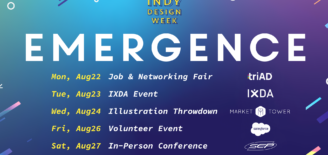Is ‘Agile Engagement’ the cure for disengaged employees?
Sir Richard Branson understands the value of employee engagement. The English business magnate’s Virgin Group holding company controls more than 400 brands and employs tens of thousands around the globe. Whether he knew what he was tapping into or not, he famously outlined critical tenants of an employee engagement movement that is gaining mindshare among business leaders.
“Train people well enough so they can leave, treat them well enough so they don’t want to,” Branson said in a 2014 Tweet that went viral. He’s also credited with the following quote from around the same time period: “If you look after your staff, they’ll look after your customers. It’s that simple.”

According to Todd Richardson and Santiago Jaramillo, the co-founders of mobile employee engagement firm Emplify, most companies are falling short of Branson’s mantra because they aren’t adequately investing in their employees — at least not compared to to other budget priorities.
Some surveys show companies spend upwards of 25 percent of their budget on customer service, but less than one percent on employee marketing. It’s kind of like a car with no gas; it doesn’t matter how high performance your engine is if you don’t have the fuel to get down the road.
Richardson and Jaramillo make their case for focusing more on employees in a new book they’ve authored titled “Agile Engagement: How to Drive Lasting Results by Cultivating a Flexible, Responsive, and Collaborative Culture.” Published by Wiley Publishing, Agile Engagement is available in stores and online on December 5th, and for preorder immediately.
In the book, the authors answer the question: how do we measure and drive engagement? It’s an important question that doesn’t appear to have an easy answer because 70 percent of business leaders believe employee engagement is critical to achieving business outcomes, yet only 20 percent believe their current initiatives are driving those outcomes (CEB). In Agile Engagement, Richardson and Jaramillo reveal employee engagement strategies and a framework used to determine unique levels of engagement at any organization.

But why should business leaders care so much about employee engagement? It’s not a vanity metric. Some surveys estimate that employees are disengaged at work at staggering levels. Companies that invest more in their employees compared to their peer companies realize significant financial gains. For example:
- Companies with engaged employees outperform those without by 202%. — Dale Carnegie
- Companies with engaged employees report 2.5x more revenue than competitors with low engagement levels. — The Muse
- Firms with high levels of employee engagement also have higher levels of shareholder value. — Employee Engagement, 2008 (Macey)
Agile Engagement dives into real engagement, helping business owners, HR leaders and managers build their culture, improve leadership skills, retain and motivate employees and ultimately drive business outcomes through people-first strategy.
The book specifically helps business leaders tackle challenges like:
- How to build a future-proof framework for employee engagement
- How to use data to improve employee engagement strategy
- How to drive engagement within your organization
Agile Engagement features case studies and anecdotal evidence from reputable organizations including Appirio, FirstPerson, Cummins, Pacers Sports + Entertainment, Andretti Autosports and Teach for America.






































